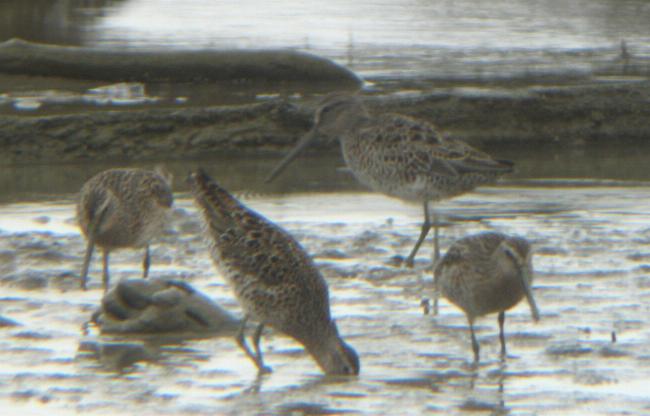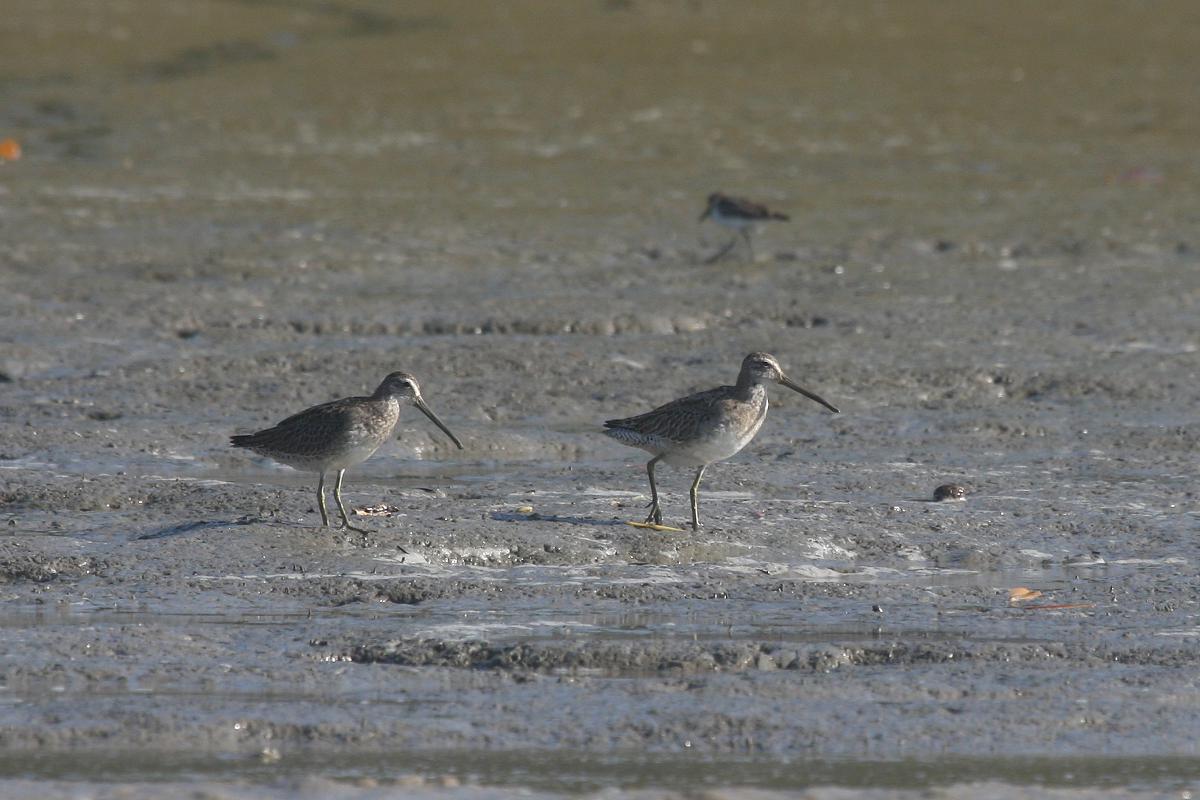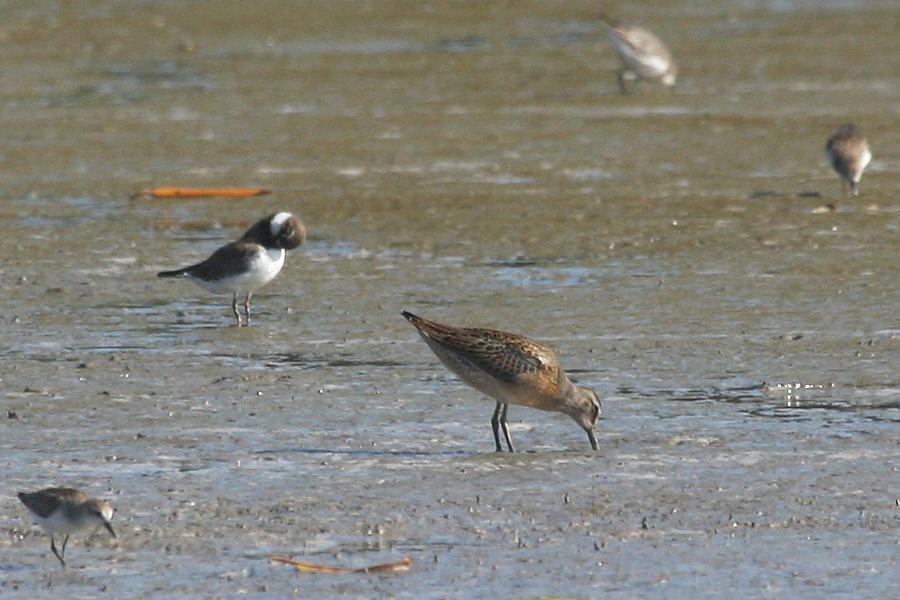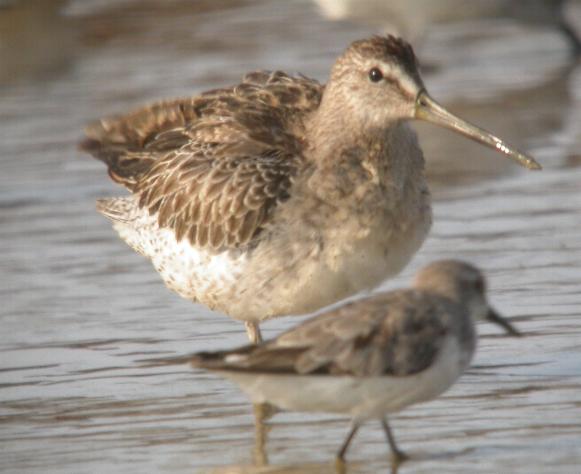 Short-billed Dowitcher (Limnodromus griseus)
Short-billed Dowitcher (Limnodromus griseus)
 Short-billed Dowitcher (Limnodromus griseus)
Short-billed Dowitcher (Limnodromus griseus) |
 |
| Pictures (click on them to enlarge) | ||
|---|---|---|
 © Steven Wytema |  © Carl Beel |  © Carl Beel |
 © Foek Chin Joe |
| The Short-billed Dowitchers are present all year round in Suriname, but they are numerous especially in April and in August, September. As many migrants from the North, they go further South to return again in spring. They breed far north in Canada. Photo of Short-billed dowitchers, searching for food along the Surinamese coast made by Carl Beel in September 2011 and by Steven Wytema in April 2005.The last one was made by Foek Chin Joe at Weg naar Zee. Dominiek Plouvier made the video with Yellow-billed Terns, Turnstones and a short-billed Dowitcher. Fred Pansa filmed a dowitcher on one leg in January 24. |
| Video (click the link or the 'play'-button to see) | ||
|---|---|---|
| Video recording of a Short-billed Dowitcher © ; | Video recording of a Short-billed Dowitcher © ; |
|
|
||||||||||||||||||||||||||||||||||||||||||||
| Observations through the year | Observations of breeding through the year |
|---|---|
| The 145 reported observations of this bird in Suriname, mainly for the last 50 years up to 2018, have been grouped by month. More birds on one day are counted as one observation. Of course, if the graph should depict the total number of birds seen, the differences between the months could be much more pronounced. | The reported breeding observations of this bird in Suriname. Most observations are about nest with eggs, some about fledglings, or feeding at a nest or the building of a nest. Of the about 5000 nests and eggs found for all species together, about 1/3 comes from the egg collection of Penard between 1896 and 1905. For some reason most collecting then was done in the first half of each year, so the shown distribution does not necessarily reflect the actual breeding preferences. The main dry season in Suriname is reckoned to be from half August to the end of November, the main wet season from half April to half August, but the the timing of begin and end does vary from year to year. Around March a second dry season often occurs. |